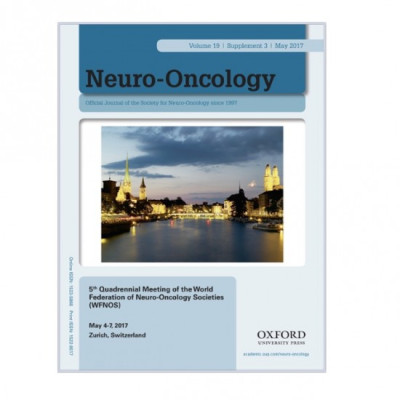Publication
Towards individualized survival prediction in glioblastoma patients using machine learning methods
L. Vera, J. Pérez-Beteta, D. Molina, J.M. Borrás, M. Benavides, J.A. Barcia, C. Velásquez, D. Albillo, P. Lara, V.M. Pérez-García
Neuro-Oncology 19(3):iii84-iii84 (2017)
MOLAB authors
Abstract
Introduction: Machine learning methods are integrated in clinical research studies due to their strong capability to discover parameters having a high information content and their predictive combined potential. Several studies have been developed using glioblastoma patient’s imaging data. Many of them have focused on including large numbers of variables, mostly two-dimensional textural features and/or genomic data, regardless of their meaning or potential clinical relevance. Materials and methods: 193 glioblastoma patients were included in the study. Preoperative 3D magnetic resonance images were collected and semi-automatically segmented using an in-house software. After segmentation, a database of 90 parameters including geometrical and textural image-based measures together with patients’ clinical data (including age, survival, type of treatment, etc.) was constructed. The criterion for including variables in the study was that they had either shown individual impact on survival in single or multivariate analyses or have a precise clinical or geometrical meaning. These variables were used to perform several machine learning experiments. In a first set of computational cross-validation experiments based on regression trees, those attributes showing the highest information measures were extracted. In the second phase, more sophisticated learning methods were employed in order to validate the potential of the previous variables predicting survival. Concretely support vector machines, neural networks and sparse grid methods were used. Results: Variables showing high information measure in the first phase provided the best prediction results in the second phase. Specifically, patient age, Stupp regimen and a geometrical measure related with the irregularity of contrast-enhancing areas were the variables showing the highest information measure in the first stage. For the second phase, the combinations of patient age and Stupp regimen together with one tumor geometrical measure and one tumor heterogeneity feature reached the best quality prediction. Conclusions: Advanced machine learning methods identified the parameters with the highest information measure and survival predictive potential. The uninformed machine learning methods identified a novel feature measure with direct impact on survival. Used in combination with other previously known variables multi-indexes can be defined that can help in tumor characterization and prognosis prediction. Recent advances on the definition of those multi-indexes will be reported in the conference.
Funding: James S. Mc. Donnell Foundation (USA) 21st Century Science Initiative in Mathematical and Complex Systems Approaches for Brain Cancer [Collaborative award 220020450 and planning grant 220020420], MINECO/FEDER [MTM2015-71200-R], JCCM [PEII-2014-031-P].















